The Best Homemade Hibachi Noodles
These hibachi noodles are the best homemade version of a restaurant favorite. They’re gluten-free, paleo, and even vegan!
What are Hibachi Noodles?
There’s something so fun and special about going out to dinner at a Hibachi grill! I used to work a Japanese steakhouse as a server in college and really only applied for the job because I loved the food so much. Needless to say, I was in heaven, and I took full advantage and ate hibachi noodles pretty much every day. Hibachi noodles are delicious noodles coated in a sweet, savory and tangy sauce, typically served in Japanese restaurants.
Once I went gluten-free and soy-free, I never thought I’d be able to have these hibachi noodles again. I finally decided to try it at home, and I promise it tastes like the real deal and is fairly low effort! These hibachi noodles are made with gluten-free noodles and a delicious soy-free sauce, and is paleo and easily made AIP and vegan!
The Ingredients to Make Hibachi Noodles at Home
- Coconut Aminos
- Apple Cider Vinegar
- Garlic Paste: You can sub 3 cloves of garlic, minced.
- Coconut Sugar
- Salt & Black Pepper: Omit pepper for AIP.
- Ghee or butter. You can sub coconut oil for AIP & vegan.
- Noodles. You can use any spaghetti of your choice to make hibachi style noodles at home! Use Jovial Brown-rice for GF, or Jovial cassava pasta for AIP/paleo.
- Sesame Seeds & Green Onion: To garnish! Omit sesame seeds for AIP.
How To Make the Best Homemade Hibachi Noodles, Just like Benihana!
- Make Sauce: Using a medium bowl, whisk the coconut aminos, garlic paste, apple cider vinegar, coconut sugar, and salt and pepper together. Set aside.
- Combine & Serve: Heat the ghee in a large deep pan over medium heat until melted. Add the cooked spaghetti and top with the sauce mixture. Stir to coat until the pasta is thoroughly coated. Serve topped with sesame seeds and green onion.
What sauce do you use for hibachi noodles?
Traditionally, it’s a soy-based sauce with garlic paste, vinegar, and sugar. We’ll be mimicking the traditional recipe but making it gluten-free.
What noodles are used for hibachi noodles?
Typically, yakisoba noodles are used, but for homemade versions, you can use spaghetti or even ramen noodles.
How do you make hibachi noodles with chicken?
Chicken is a great addition to these homemade hibachi noodles! Simply add the cooked cubed chicken to the mix with a bit of extra sauce.
Can you make these noodles ahead of time? How do you reheat them?
These noodles are best fresh, but you can easily make them ahead of time and reheat them. Simply store in the fridge in glass Tupperware, and reheat in a pan until softened and warm.
What do you serve with hibachi noodles?
You’ll also love…
- Ground Beef Ramen Noodle Stir Fry
- Japchae | Korean Noodle Stir Fry
- Beef and Broccoli Lo Mein
- Chicken and Ramen Stir Fry
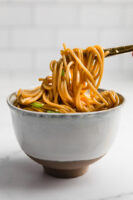
The Best Benihana Style Homemade Hibachi Noodles (Gluten free)
- Yield: 4 servings 1x
Description
These hibachi noodles are a gluten-free dupe for a restaurant favorite. They’re paleo-friendly, vegan and can easily be made AIP-compliant.
Ingredients
- 1/4 cup coconut aminos
- 1 tsp apple cider vinegar
- 1 tbsp garlic paste (sub 3 cloves garlic, minced)
- 1 tbsp coconut sugar
- 1/3 tsp salt
- 1/4 tsp black pepper (omit for AIP)
- 3 tbsp ghee (sub coconut oil for AIP/vegan)
- 12 oz gluten-free spaghetti, cooked through (use Jovial Brown-rice for GF, or Jovial cassava pasta for AIP/paleo)
- 2 tsp sesame seeds (omit for AIP)
- 1 tbsp green onion, chopped
Instructions
- Using a medium bowl, whisk the coconut aminos, garlic paste, apple cider vinegar, coconut sugar, and salt and pepper together. Set aside.
- Heat the ghee in a large deep pan over medium heat until melted. Add the cooked spaghetti and top with the sauce mixture. Stir to coat until the pasta is thoroughly coated.
- Serve topped with sesame seeds and green onion.
Notes
All nutritional information are estimations and will vary. Estimations do not include optional ingredients.
Nutrition
- Serving Size: 1 serving
- Calories: 229
- Fat: 10.1g
- Carbohydrates: 36.2g
- Fiber: 1.5g
- Protein: 1.5g
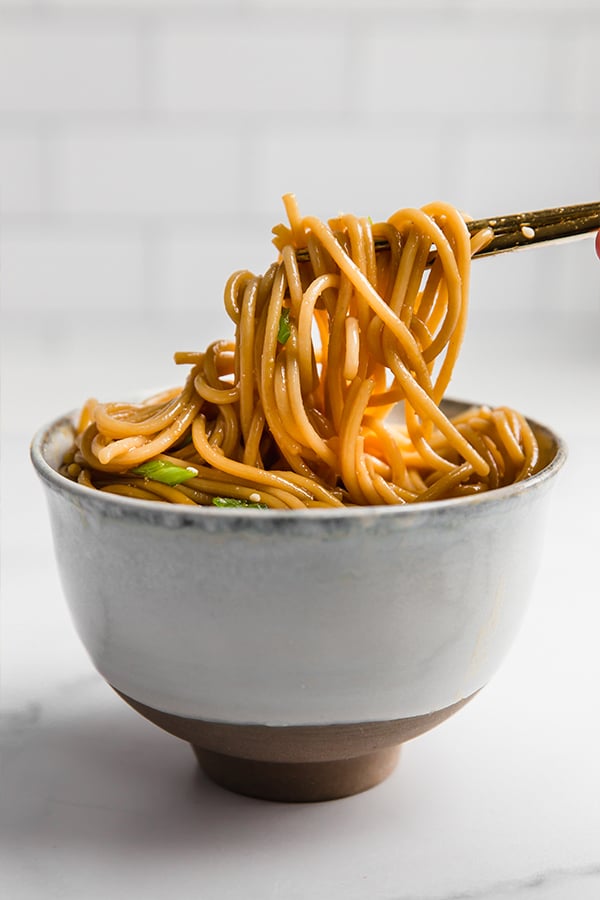
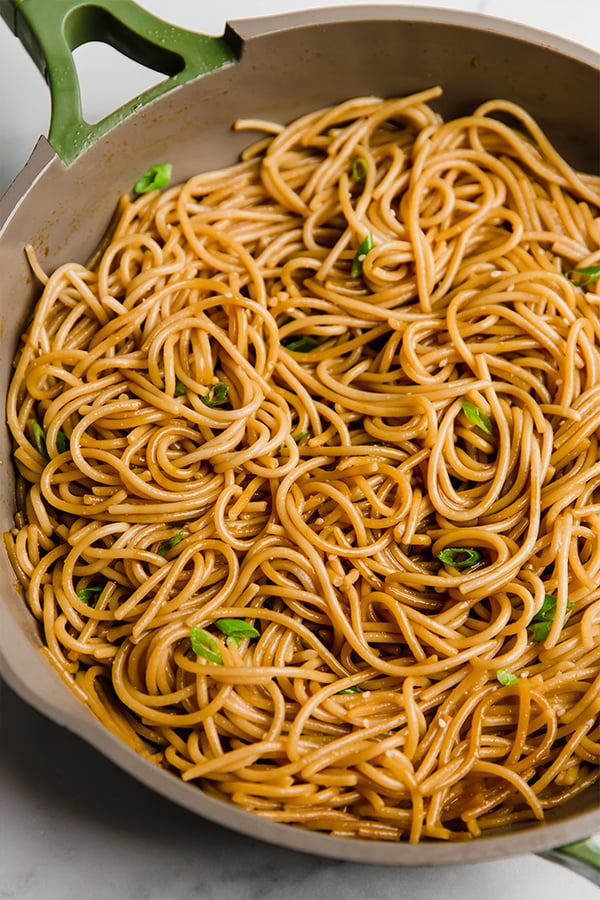

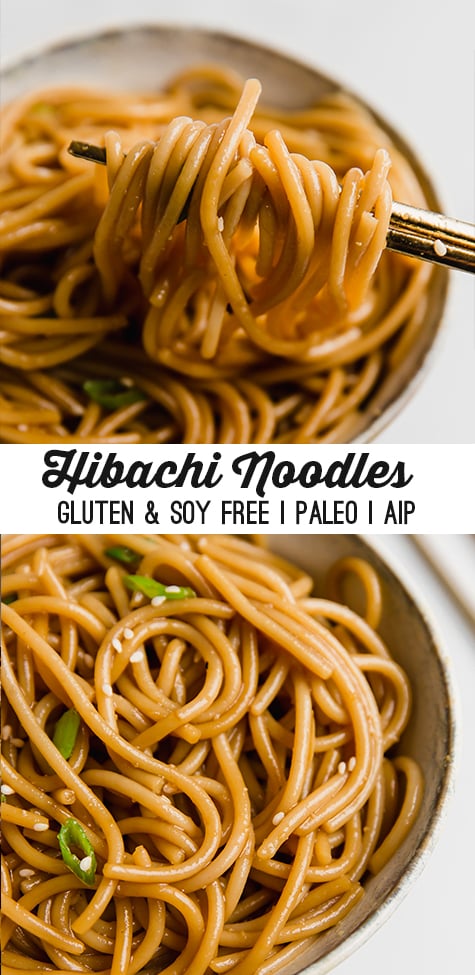

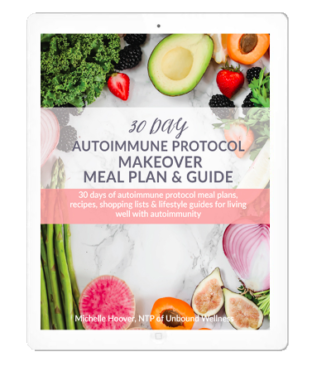
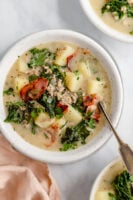
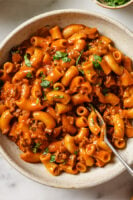
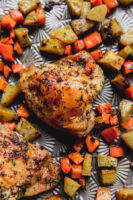
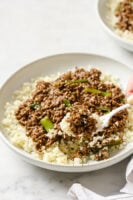
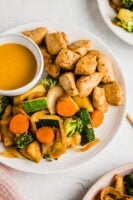
Made this last weekend & it was fabulously delicious couldn’t wrap my AiP brain over just eating noodles so I put 5 handfuls of baby spinach. It was delicious & felt better that I added a veggie Thank you for creating this for us!
The flavor was amazing but my noodles came out gluggy. Any tips on cooking cassava noodles?
I would try under boiling it a bit and seeing how that works!
Absolutely delicious! Thank you for this recipe! I used the Jovial Cassava pasta and it was delicious 🙂
★★★★★
I’m so happy to hear that!
Really good and simple to make. One of my quick go to noodle recipes. Yum
★★★★★
So glad you enjoy this recipe!!
After a long, exhausting day, I came here in search of a quick, everything on hand recipe. I spotted this, and went straight to my kitchen. 20 minutes later, dinner was done and I’m savoring a bowl as I type this. It’s absolutely perfect! I made the entire dish in my IP, including the pasta, which turns out perfect every time. I subbed fish sauce for the Aminos as I had run out. I used just shy of the required amount so it wouldn’t be overly salty, topped up the rest with a little pickle juice, omitted the salt, omitted the sesame seeds as I don’t tolerate them, and I didn’t miss them here. During the final step, I simply added a drizzle of the reserved pasta water and a small pinch of arrowroot. Asian is my top fave cuisine, and this will absolutely be on regular rotation. I see you have a lot more Asian recipes, and I will try a lot of them. I found it comfortably filling, so there’s enough leftover for another bowl later, when hunger strikes. I am keeping it on the “Warm” feature of my IP.
★★★★★